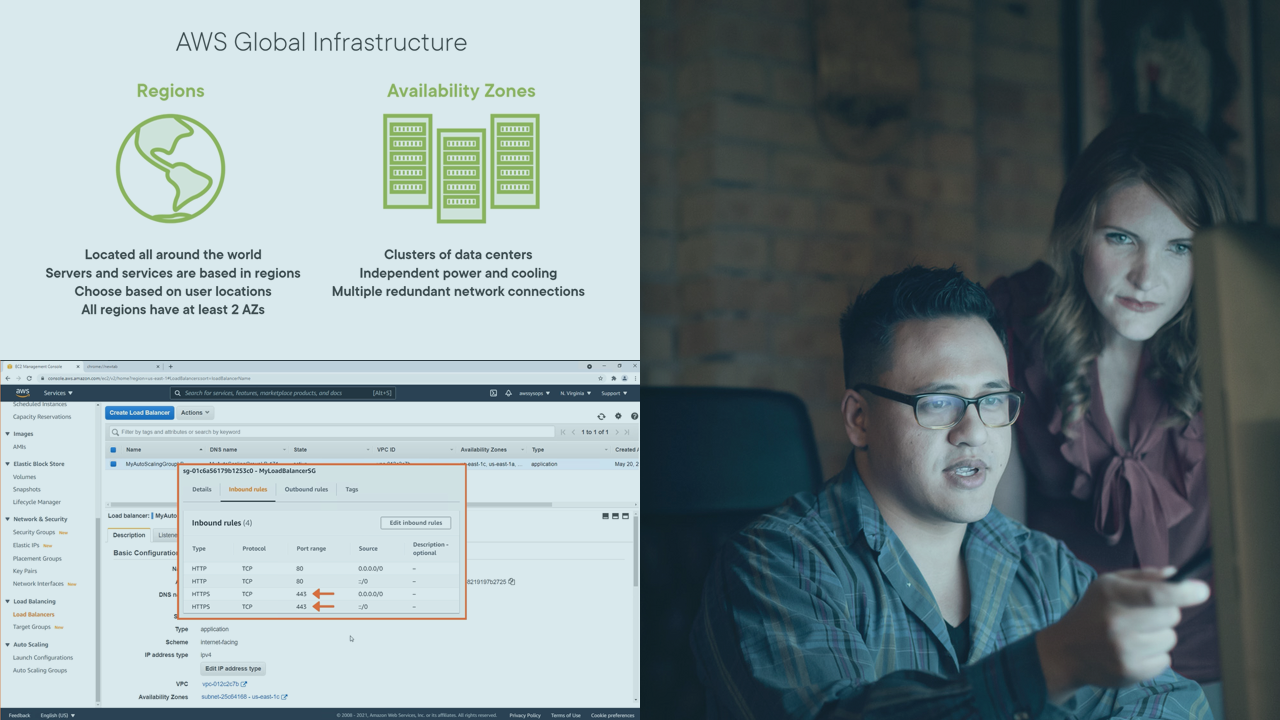- Course
AWS SysOps Admin: Implement High Availability and Resilient Environments
This course will teach you how to design globally scalable, highly available, and fault-tolerant applications on AWS, focusing on the “Reliability and Business Continuity” domain of the AWS Certified SysOps Administrator - Associate exam.

- Course
AWS SysOps Admin: Implement High Availability and Resilient Environments
This course will teach you how to design globally scalable, highly available, and fault-tolerant applications on AWS, focusing on the “Reliability and Business Continuity” domain of the AWS Certified SysOps Administrator - Associate exam.
Get started today
Access this course and other top-rated tech content with one of our business plans.
Try this course for free
Access this course and other top-rated tech content with one of our individual plans.
This course is included in the libraries shown below:
- Cloud
What you'll learn
Simply deploying your application to the AWS cloud does not guarantee that it will be highly available or resilient in the event of a disaster.
In this course, AWS SysOps Admin: Implement High Availability and Resilient Environments, you’ll delve into how to use AWS tools and services to implement highly available environments that are resilient to failures within an availability zone (AZ) or even an entire region.
First, you’ll explore the AWS global infrastructure and learn how to differentiate between deployments that leverage a single AZ and those that span multiple availability zones.
Next, you’ll discover how to implement fault-tolerant workloads that are self-healing and minimize system downtime.
Finally, you’ll learn how to leverage Amazon Route 53 health checks and routing policies to ensure users are always able to access your application as quickly and efficiently as possible.
When you're finished with this course, you'll have the skills and knowledge of a SysOps administrator needed to answer questions from the “Reliability and Business Continuity” domain of the AWS Certified SysOps Administrator - Associate exam.
